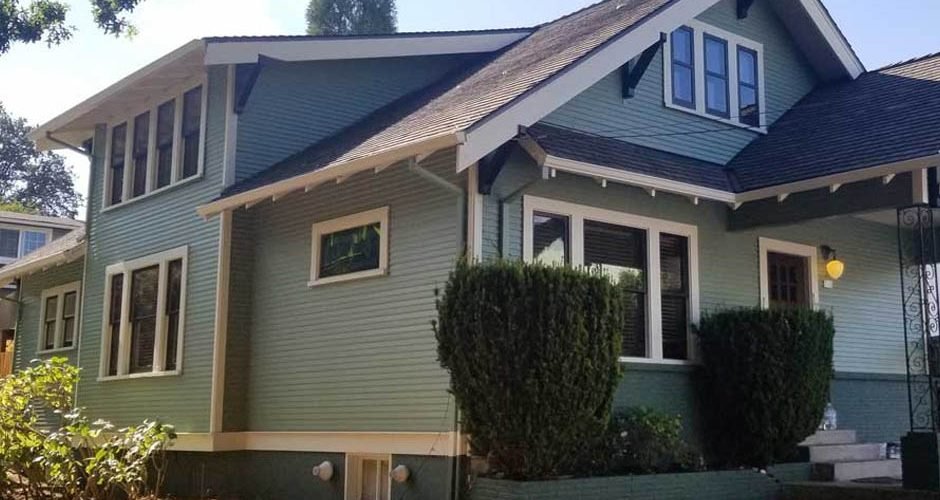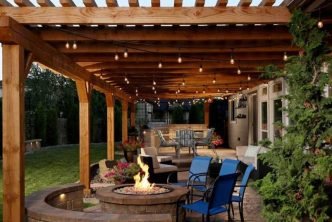A home’s exterior says a lot about its inhabitants. Not convinced? Okay, what would you think of a house with pink and purple stripes? That it’s inhabited by a wild, artsy family, right? How about a home with peeling paint and rust stains? Well, that one probably belongs to someone who is not big on maintenance, no?
If you need a pro to freshen up your exterior, consider contacting AlphaOne Exteriors – a firm with 10+ years of professional painting experience – for a free estimate. Their skillful technicians are also on hand to give your surfaces a new lease on life. That aside, consider the tips below when picking and choosing exterior hues for your property:
Table of Contents
1. Swim Against the Tide
What’s in vogue today may not be the same in a few years. Pick paint colors that aren’t too popular to give your home a distinctive look.
It’s okay to take risks; after all, you can change the color later if you don’t like it. Simply put, don’t be swayed by the current trend. For instance, if most people prefer shades of white, you could use light gray instead. Otherwise, you could be suckered into getting the same paint as your neighbor or changing the hue every time a new trend catches on.
2. Accentuate the Positives
Who said painting has to be boring? Use the right hues to highlight arches, bay windows, doorways, accents, trim, and shutters. That way, everything blends well together for an overall aesthetically pleasing effect.
3. Pick Colors That Flatter Your Home’s Architecture
Keep your home’s architecture and landscape in mind when considering a new exterior paint color. What colors will best complement the shape of your house? How will it fit with your neighborhood or street? What’s your overall aesthetic goal?
If your home features a more traditional look, stick to colors that won’t clash with the style. However, choose brighter and bolder hues, such as blues and greens, to make your home look more modern. Alternatively, if you own a cottage-style dwelling, opt for softer and lighter shades like beige and oatmeal.
4. Make the Color Wheel Your Friend
Before you slap paint on your walls, familiarize yourself with the color wheel. This simple tool can help you pick colors most likely to bring out your home’s most alluring qualities.
For instance, consider complementary shades like green and red or yellow and purple if you’re going for a bright and vibrant look. Likewise, try shades of the same hue for a monochromatic look – such as sky blue and navy. Analogous hues – colors that sit side by side on the color wheel, like orange, yellow, and red – can also make for an interesting palette. In other words, the color wheel provides a time-tested reference point.
5. Get Inspiration from Your Home
Take a look at your house. Which colors are present? Do they stand out, either in a good or a bad way? For example, if you adore a bright red front door, consider choosing a muted tone for the rest of the exterior to keep things balanced.
Also, if your roof tiles are an unusual shade of green, you’ll want to avoid clashing with the hue. Thus, choose a complementary color.
Your landscape may also provide hints – if you have a lot of lush greenery, the right shade of green might bring out its beauty. Likewise, if your garden is full of yellow and red blooms, you may choose vibrant colors to create a cheerful vibe. Also, a formal landscape setup, with rows of boxwood shrubs along a walkway, might call for bold colors and accents with a distinct design style.
6. Copy Ideas
Since the color possibilities will likely be endless, you might struggle to decide between the shades you have in mind. As such, you may check out similar homes in your area to get a feel for hues that work.
You may also get ideas from magazines and other publications. Sure, you’ll be a color copycat, but not all stories have to be original. That said, infuse your personality into the final look for a unique touch. For instance, if you love bold statements, go for a rich shade of navy blue. Or, slightly tweak the color palette you fancy to make it your own.
Hopefully, these pointers can help you pick an exterior color scheme that makes your property pop. But if you’re still stumped, let an outsider, such as a designer, help you decide. In so doing, you can take the guesswork out of your upcoming project.





